| |
Hepatitis C Care Cascade and Progress Toward
Elimination in the United States, 2021 (Global
Hepatitis Summit 2023, Paris April 28)
|
| |
| |
John Ward
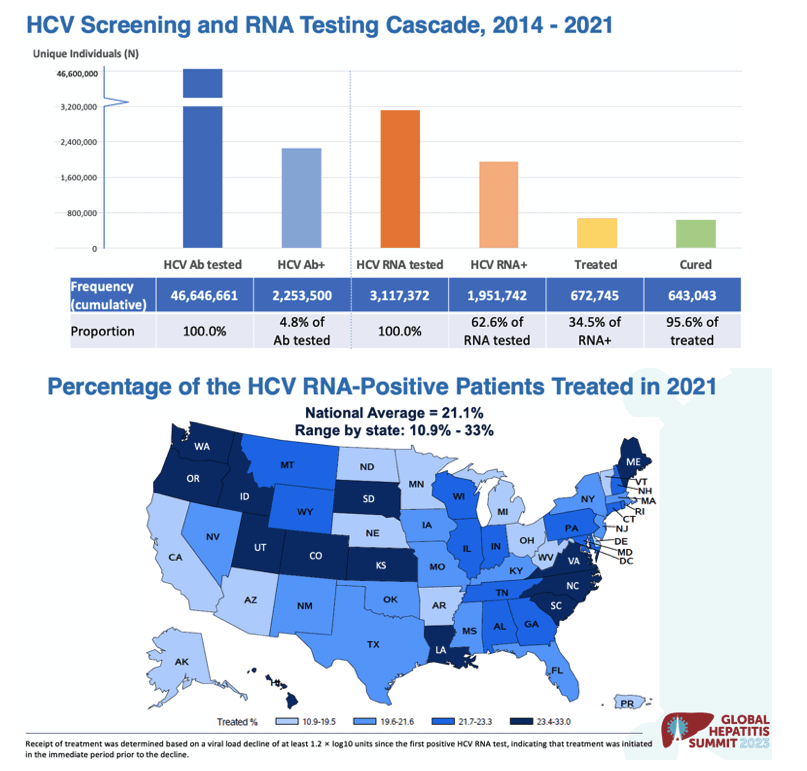
----------------------------------
"80% of new cases are more than 10 miles away from him reduction services CDC reports. We have a problem in the USA in that our drug use is distributed rurally, there is a national opioid crisis" so a lot of HCV infections occur in rural areas.
"since 2013 we've had 100% increase in new infections and nowhere close to 80% reduction so we are not n track for elimination in the USA."
"Could we have an HCV vaccine? Yes if we had the financial commitment to vaccine that HIV has had, its feasible, its more feasible biologically than with HIV. WE NEED THE MONEY."
"We have been creative & heroic but we need the money, where will it come from? The White Houses plan is asking Congress for $5 billion for HCV." David Thomas at GHS
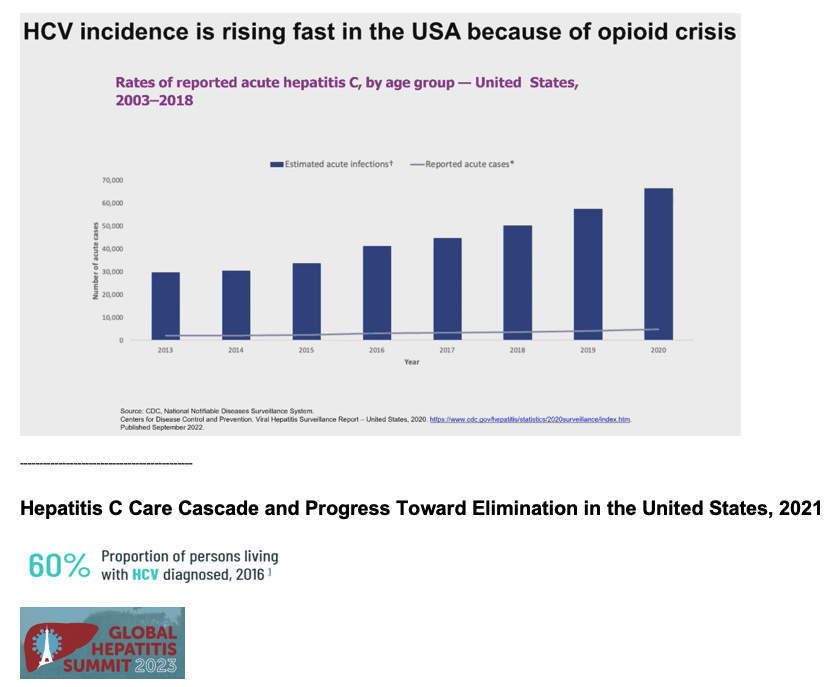
---------------------------------------------
April 28 2023 Paris, France
John W. Ward1, Marc G. Ghany2, Timothy R. Morgan3, Steven E. Marx4, Jatinder Kaur4, Nidhi Shukla4, Shivaji Manthena4, Shiyin Jiao4
1 Coalition for Global Hepatitis Elimination, The Task Force for Global Health, Decatur, GA, U.S.A.
2 Clinical Hepatology Research Section, Liver Diseases Branch, National Institute of Diabetes and Digestive and Kidney Diseases, National Institute of Health, Bethesda, MD, U.S.A
3 Gastroenterology Section, VA Long Beach Healthcare System, Long Beach, CA, U.S.A.
4 AbbVie Inc, North Chicago, IL, U.S.A.
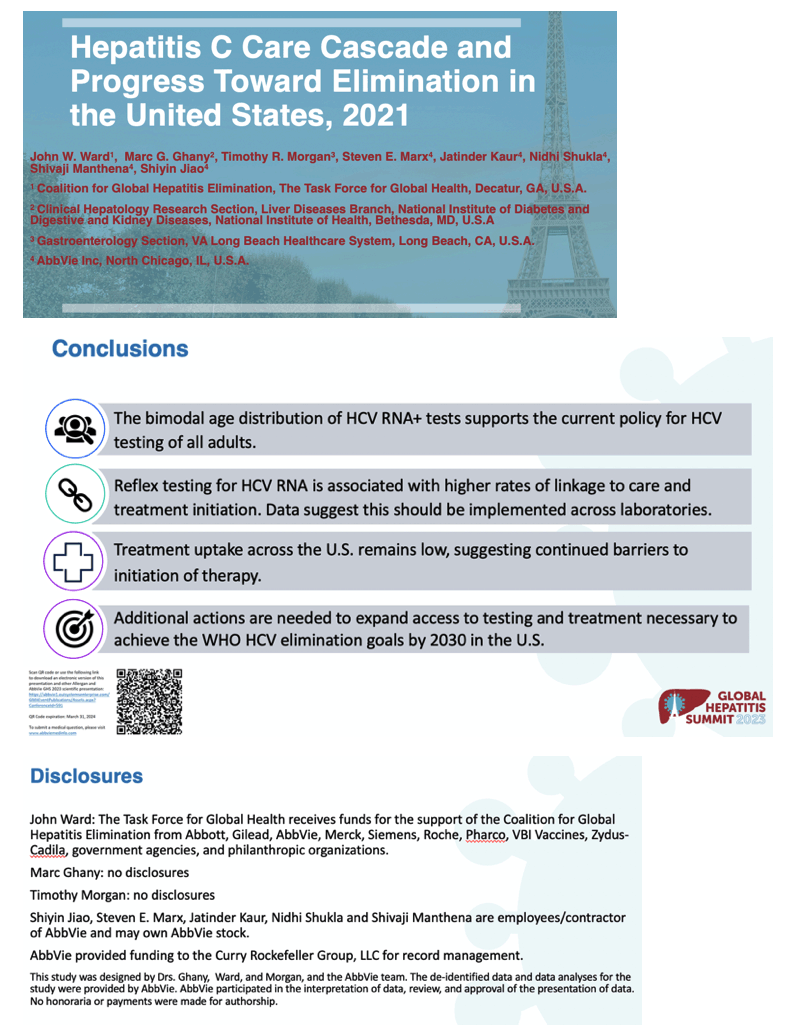
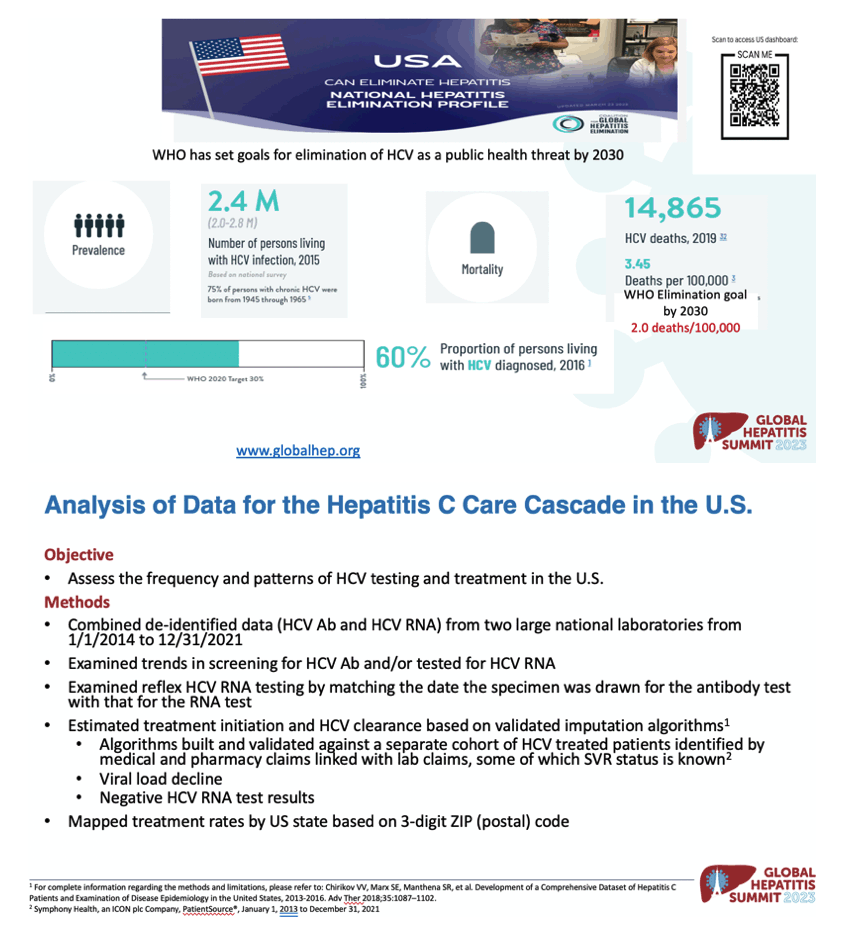
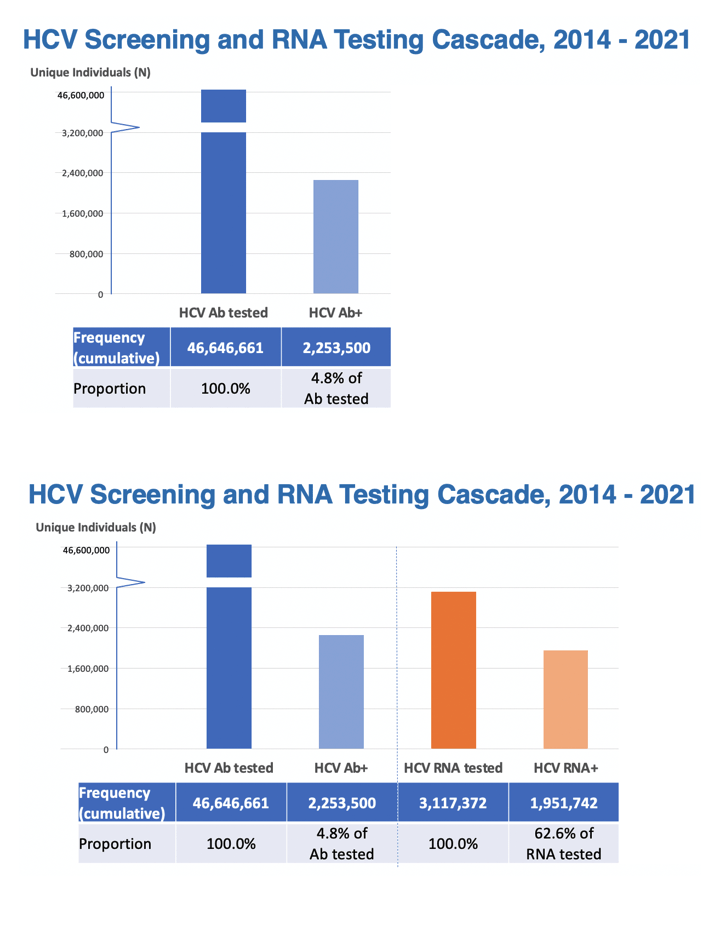
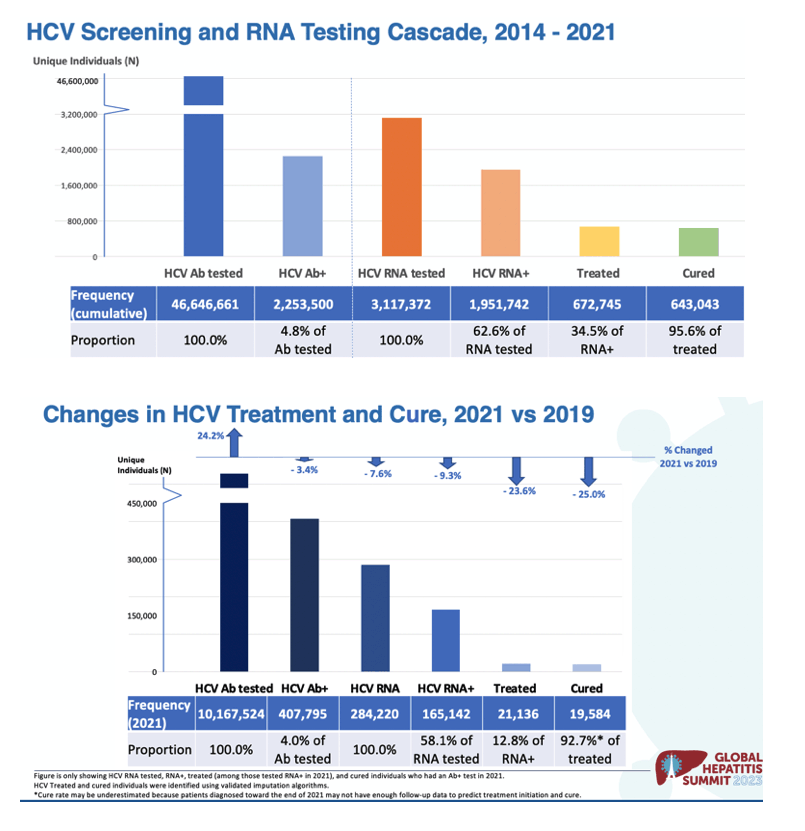
•Algorithms were built and validated against a separate cohort of treated patients identified by medical and pharmacy claims linked with lab claims, some of which have known SVR status
•Viral load decline of at least 1.2 x log10 units (minimum meaningful decline attributable to treatment in separate cohort) was used to flag patients assumed to have initiated therapy
•Machine learning models were developed and optimized to predict SVR. In separate cohort, SVR was defined based on continued (4-30 weeks) negative RNA after end of treatment.
Variables most predictive of SVR include follow-up RNA values and timing of measurements, payer type, age, fibrosis stage, genotype, etc. Sensitivity and Specificity of the algorithm were consistently above 0.90
•This validated algorithm was applied to the study dataset to predict cure among patients flagged as treated.
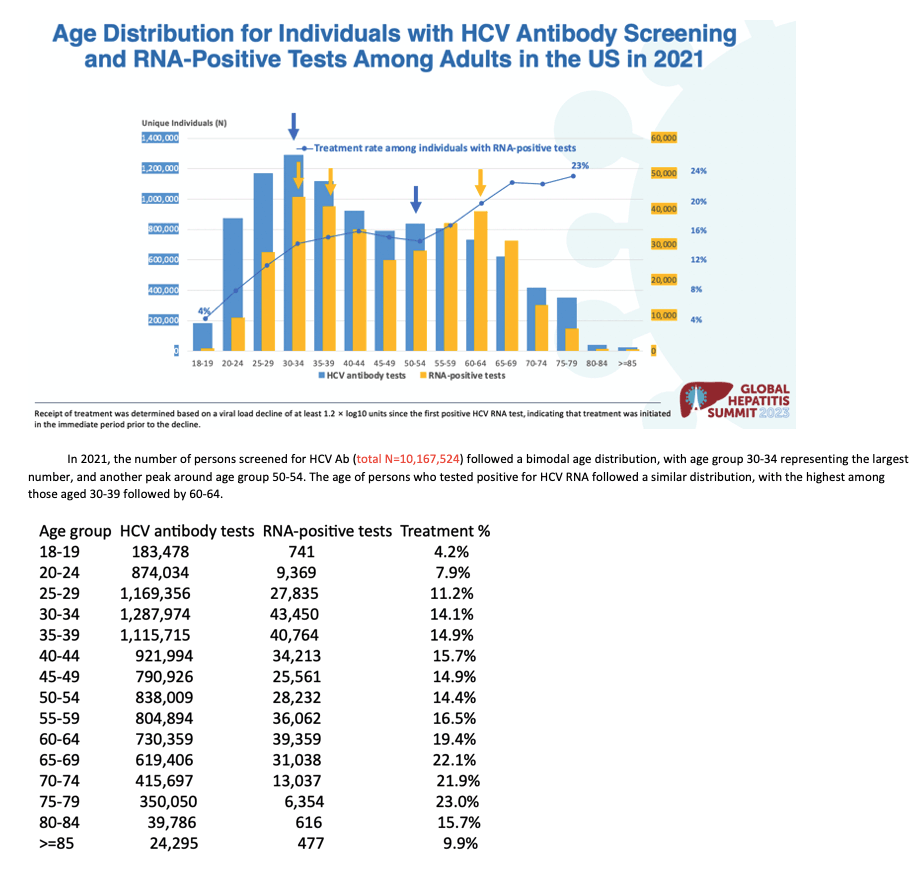
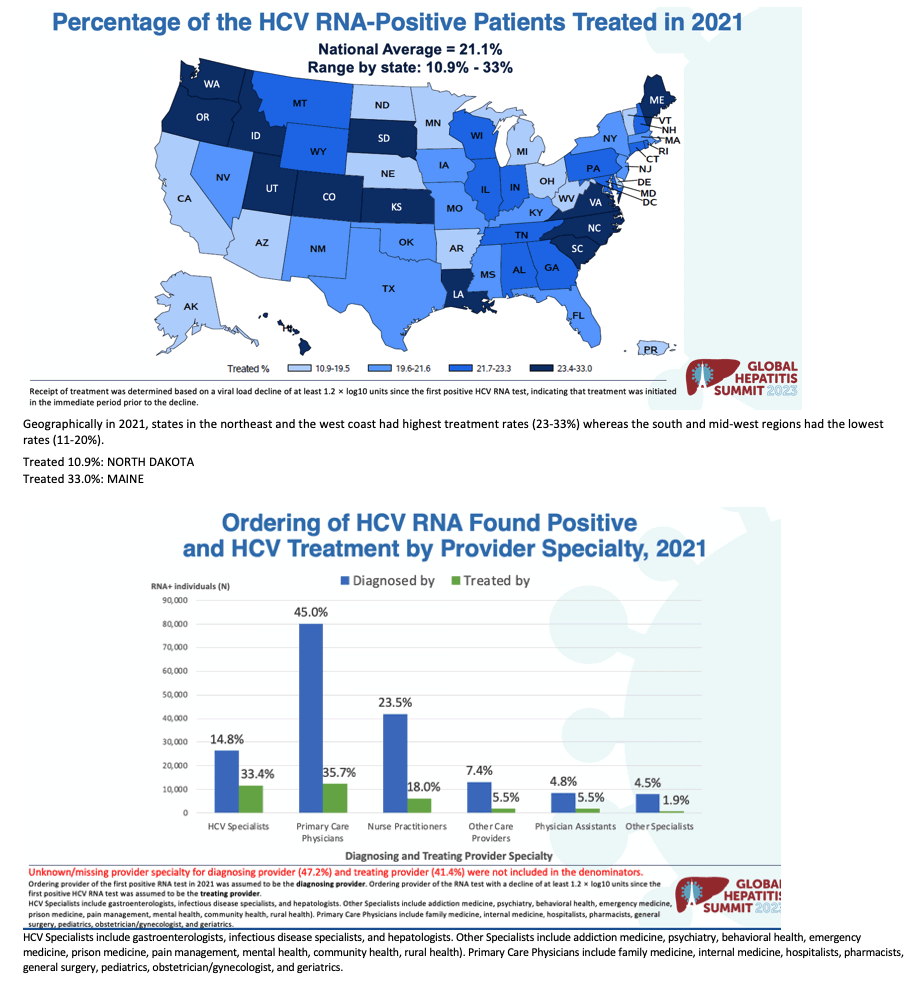
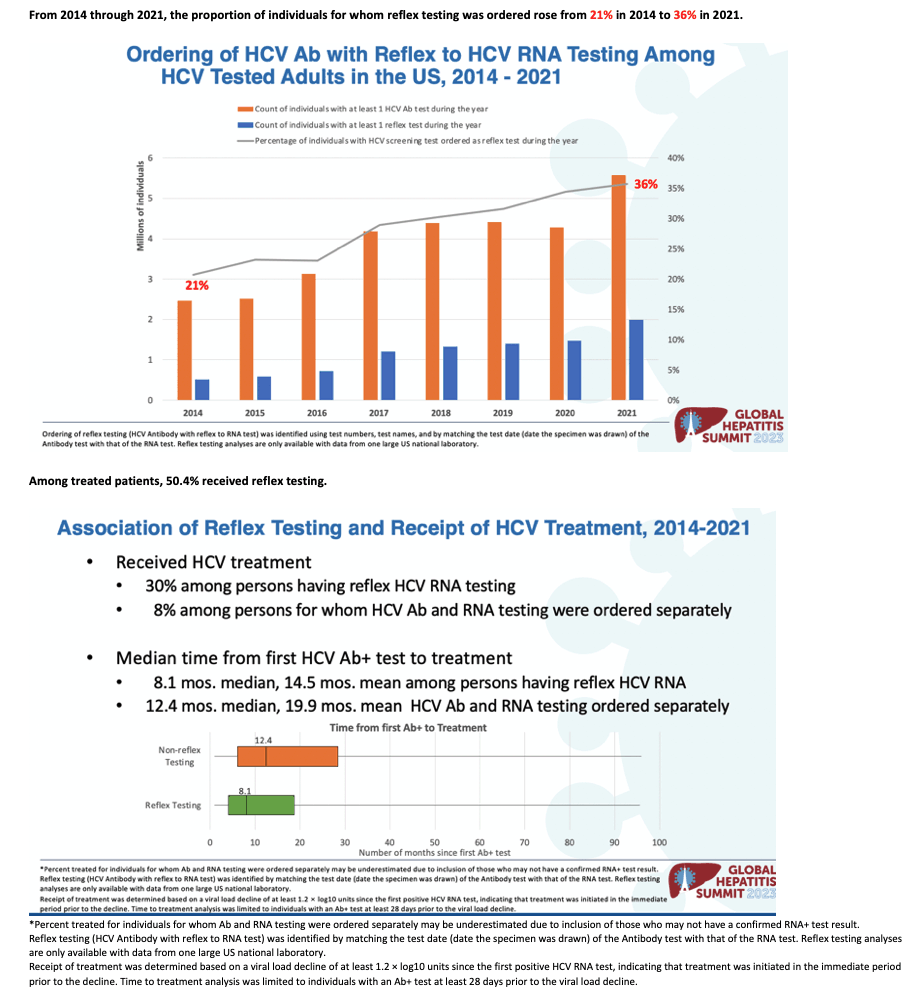
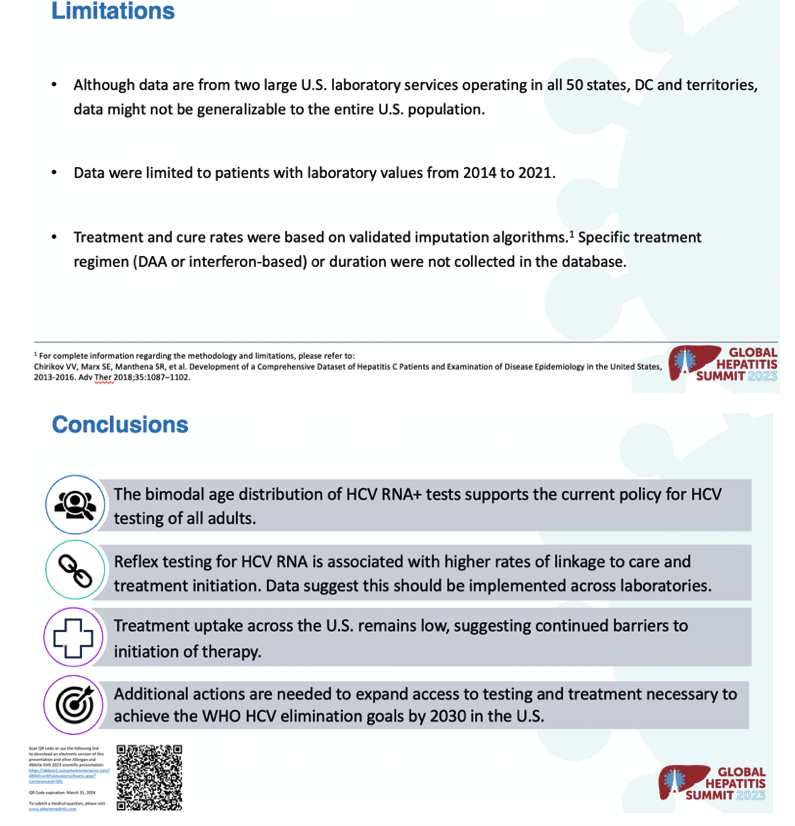
| |
| |
| |
|
|
|